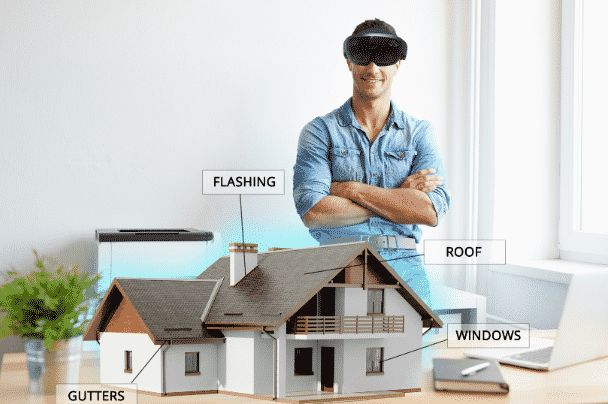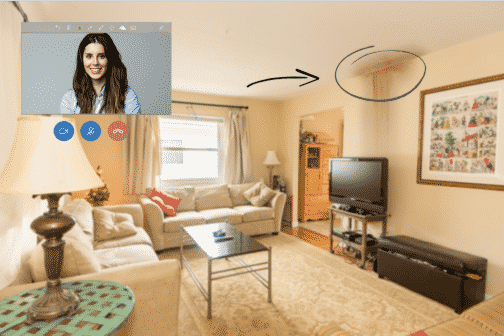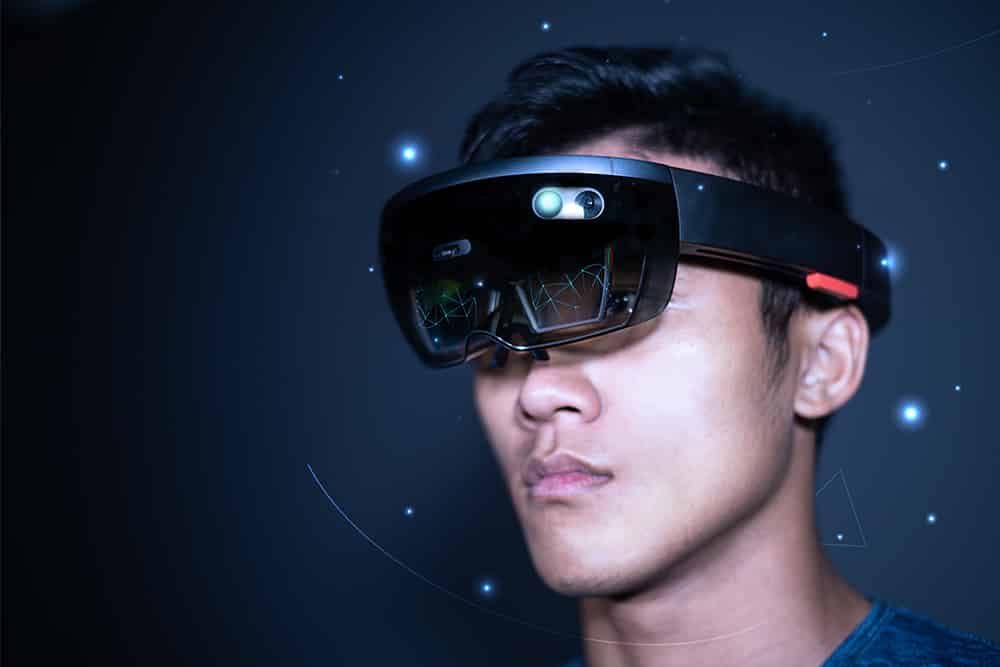How augmented reality can help organizations maximize the time of experts by using augmented reality for remote assistance.
In 1974, the television series Star Trek introduced the holodeck, a device that created a synthetic version of reality, i.e., “virtual reality (VR).” By the mid-1990s, video gamers could purchase headsets and gloves to participate in VR computer games. Analysts valued the global VR market at $11.9 billion in 2019 and projected over $87 billion in sales in 2025.
While the success of VR is laudable, the real game-changer for businesses is subsequent, though affiliated, technology “augmented reality (AR).” The difference between VR and AR is that VR replaces what a person sees and experiences. AR projects images in front of the physical environment, effectively adding digital information to what a viewer physically sees.
Businesses are implementing augmented reality in multiple ways (product design and development, enhanced product capabilities, consumer experience). One example of AR is the heads up display (HUD) windshields that display operating information (GPS, fuel levels, speed) to drivers. This feature is especially useful to companies that provide complicated technical remote system installations, maintenance, and repairs.
AR and the Delivery of Technical Services
A breakdown of critical equipment is always an emergency for the users of the machine. Clients expect the sellers or services of equipment to deliver competent repairs as quickly as possible at a low cost. Companies who fail to meet those expectations suffer losses of reputation and future customers as well as exposure to client lawsuits.
Smart manufacturers and service company owners are discovering that AR-enhancements are the keys to maintaining a competently trained workforce that operates effectively, efficiently, and correctly. AR enables a company to distinguish its remote technicians as superior to the competition. Companies that do not adopt the augmented reality remote assistance technology will lose market share to organizations that do.
Examples of AR Use in Training
Organizations around the world have introduced AR in their training. According to Tuong Huy Nguyen, a principal research analyst at Gartner Consulting, “We’re still at the early stages of this technology. What you can do today is very different from what you’ll be able to do seven to 10 years from now.” Current users of AR in their training programs include.

- U.S. Army. AR is also being used in more “complex situational awareness systems encompassing features such as friend/foe identification, multiple sensory interfaces, location intelligence, and interactive battlefield medical support.”
- Volkswagen. A system called MARTA (Mobile Augmented Reality Technical Assistance) automatically labels individual parts inside a vehicle with text and explicit work instructions. In the past, Volkswagen has also used projective AR to create what officials have called a “virtual x-ray vision” for service teams worldwide to see hidden components and structures inside vehicles.
- Sheffield Hallam University. AR is being used to teach nurse and midwife trainees about empathy and compassion for patients. Computer-generated images of a patient are superimposed onto training mannequins on an iPad to create a “real” patient experience.
Augmented Reality in e-learning enriches the learning and training experience and also make it more interesting for the learners.
AR Benefits for Remote Technicians
Recently hired as well as experienced technicians gain advantages from AR-enhanced tools for:
- Training. AR typically accelerates training for new technicians or updating skilled employees on new or upgraded products. According to Ronald Azuma of Intel Labs, “training is one of the original usages researchers pursued in augmented reality.” Some suggest that AR-training will replace training manuals and even trainers. AR 3-D visualizations will replace old training tools of printed diagrams and hypothetical scenarios, reducing the estimated $1,250 cost of training new employees.
- Remote assistance. The Covid-19 pandemic has forced companies to learn to work with remote workforces. AR benefits the technicians with augmented reality remote assistance who must be physically at worksites with real-time troubleshooting tips an expert anywhere in the world. In many cases, AR will allow technicians to remain remote and work directly with onsite personnel. According to VentureBeat, medical technicians in high-risk areas can extend critical hospital equipment with a remote expert using AR.
- Speed of repair. The ability to “see” the repair solution projected on the problem equipment eliminates the guesswork often required to diagnose a problem and pinpoint a solution. Faster repairs please clients and maximize the use of a technician’s time.
- Increased skills. The ability to resolve a technical problem with only basic knowledge extends the technician’s experience and expertise. Making them a more flexible, usable asset with increased skills lead to higher compensation, promotions, and employment opportunities.
The rapid spread of the COVID-19 virus has forced many property adjusters to remain at their homes, resulting in acceleration of remote insurance claims using Augmented Reality.
AR Benefits for Organizations
Companies that employ AR in the training and service departments realize benefits in:
- Cost savings. AR allows an organization to leverage its specialists and experts with lesser low-experience technicians to work on complex repairs that, in the past, only experts could handle. Improved problem-solving and implementation assistance reduces repair times, generating more production in the same hours.
- Organizational knowledge. AR can help companies preserve institutional knowledge and transfer it to less experienced. Having expert status and limited travel requirements may encourage older employees to remain on the job longer or participate part-time as contractors when they retire. Most business observers recognize that the quality and commitment of a company’s workforce is often the difference between success and failure.
- Customer satisfaction. Customers expect a quick response, faster service, and a complete, correct solution from their vendors and suppliers, but are often disappointed. The addition of AR to your training and technician assistance tools will complement a company’s efforts to meet their customer expectations.
Cautions of AR Use
AR is not a panacea for a company’s training and service department problems. Like most digital tools, it can be poorly designed, rejected by its intended users, and expensive:
- Customization. Very few AR applications are applicable to all circumstances just out of the box. Most require “tweaking” to fit the specific objectives of a company, AR solutions – often are integrated with artificial intelligence (AI) – can be complicated and subject to errors without careful preparation and installation. Finally, unless the AR system is easy to learn and use the first time and every time, users will reject it.
- Initial costs. AR systems require a combination of IT hardware (smartphones and tablets) and software to be effective. The expertise necessary to collect, identify, analyze, and store critical information used to overlay a schematic onto a real-world environment is typically expensive and time-consuming before it is useful.
Final Thoughts
Some technology experts claim that “almost any issue can be readily solved with the help of augmented reality solutions.” Augmented reality remote assistance enables information and data to be passed to a learner in real-time. Before implementing an AR solution, business owners might ask, “What is the real advantage of augmented reality? In a nutshell, AR allows a user to feel the exact real environment where a task has to be performed or repeated in the future. And it can be practiced again and again until the student gets it.




